For the 2025 school year, there is 1 public high school serving 486 students in Grinnell-Newburg Comm School District. This district's average high testing ranking is 8/10, which is in the top 30% of public high schools in Iowa.
Public High School in Grinnell-Newburg Comm School District have an average math proficiency score of 72% (versus the Iowa public high school average of 60%), and reading proficiency score of 76% (versus the 71% statewide average).
Public High School in Grinnell-Newburg Comm School District have a Graduation Rate of 92%, which is more than the Iowa average of 88%.
The school with highest graduation rate is Grinnell Community Senior High School, with 90-94% graduation rate. Read more about public school graduation rate statistics in Iowa or national school graduation rate statistics.
Minority enrollment is 11% of the student body (majority Hispanic), which is less than the Iowa public high school average of 27% (majority Hispanic).
Overview
This School District
This State (IA)
# Schools
5 Schools
365 Schools
# Students
1,532 Students
171,507 Students
# Teachers
109 Teachers
11,091 Teachers
Student : Teacher Ratio
14:1
14:1
District Rank
Grinnell-Newburg Comm School District, which is ranked within the top 30% of all 325 school districts in Iowa (based off of combined math and reading proficiency testing data) for the 2021-2022 school year.
The school district's graduation rate of 90-94% has increased from 85-89% over five school years.
Overall District Rank
#73 out of 327 school districts
(Top 30%)
(Top 30%)
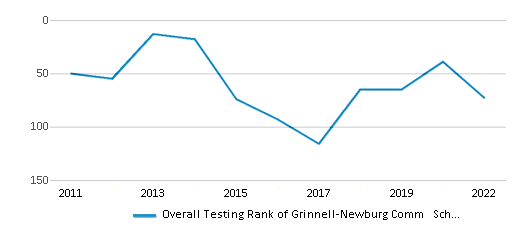
Math Test Scores (% Proficient)
75%
64%
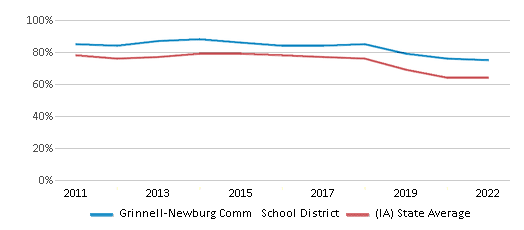
Reading/Language Arts Test Scores (% Proficient)
77%
70%
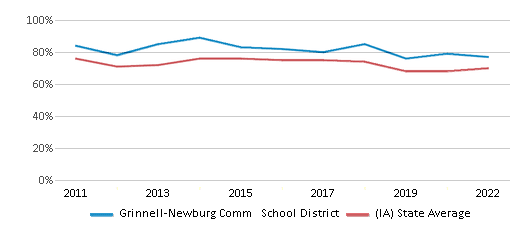
Science Test Scores (% Proficient)
71%
63%
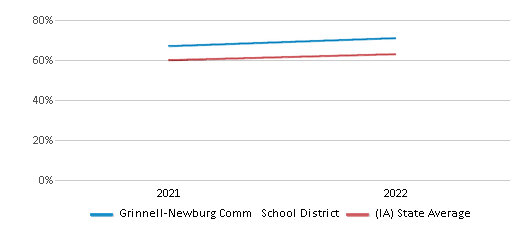
Graduation Rate
90-94%
90%
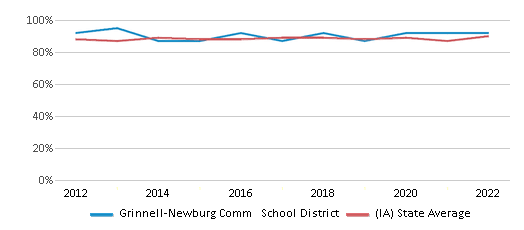
Students by Ethnicity:
Diversity Score
0.24
0.45
# American Indian Students
4 Students
796 Students
% American Indian Students
n/a
1%
# Asian Students
13 Students
3,901 Students
% Asian Students
1%
2%
# Hispanic Students
97 Students
21,518 Students
% Hispanic Students
6%
13%
# Black Students
28 Students
10,972 Students
% Black Students
2%
6%
# White Students
1,332 Students
125,591 Students
% White Students
87%
73%
# Hawaiian Students
n/a
863 Students
% Hawaiian Students
n/a
1%
# Two or more races Students
58 Students
7,560 Students
% of Two or more races Students
4%
4%
Students by Grade:
# Students in PK Grade:
78
56
# Students in K Grade:
103
70
# Students in 1st Grade:
104
87
# Students in 2nd Grade:
94
83
# Students in 3rd Grade:
118
82
# Students in 4th Grade:
110
105
# Students in 5th Grade:
109
218
# Students in 6th Grade:
97
1,345
# Students in 7th Grade:
108
5,175
# Students in 8th Grade:
125
7,975
# Students in 9th Grade:
140
39,092
# Students in 10th Grade:
129
39,818
# Students in 11th Grade:
105
38,859
# Students in 12th Grade:
112
38,542
# Ungraded Students:
-
-
District Revenue and Spending
The revenue/student of $16,971 is higher than the state median of $16,468. The school district revenue/student has stayed relatively flat over four school years.
The school district's spending/student of $14,971 is less than the state median of $16,042. The school district spending/student has stayed relatively flat over four school years.
Total Revenue
$26 MM
$8,262 MM
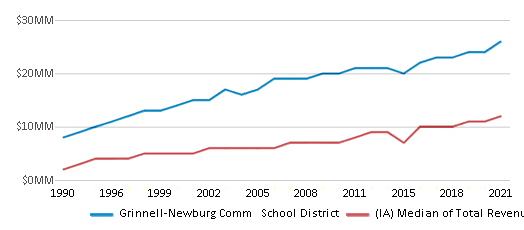
Spending
$23 MM
$8,048 MM
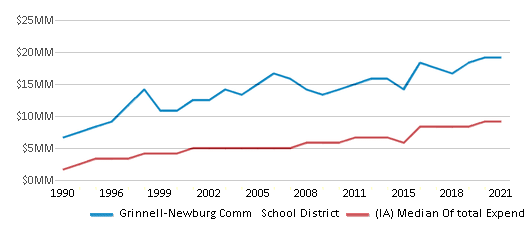
Revenue / Student
$16,971
$16,468
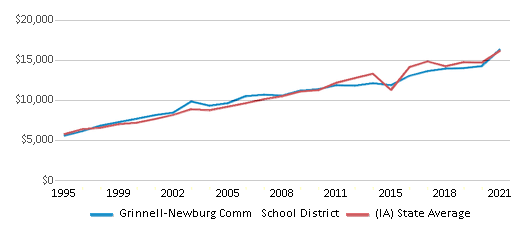
Spending / Student
$14,971
$16,042
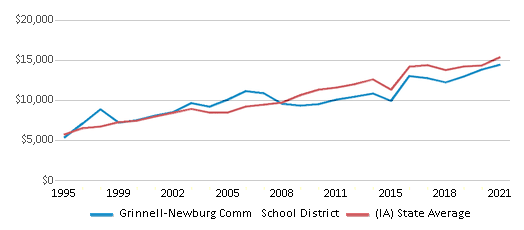
Best Grinnell-Newburg Comm School District Public High Schools (2025)
School
(Math and Reading Proficiency)
(Math and Reading Proficiency)
Location
Grades
Students
Rank: #11.
Grinnell Community Senior High School
(Math: 72% | Reading: 76%)
Rank:
Rank:
7/
Top 50%10
1333 Sunset St
Grinnell, IA 50112
(641) 236-2720
Grinnell, IA 50112
(641) 236-2720
Grades: 9-12
| 486 students
Recent Articles

Year-Round Or Traditional Schedule?
Which is more appropriate for your child? A year-round attendance schedule or traditional schedule? We look at the pros and cons.

Why You Should Encourage Your Child to Join a Sports Team
Participating in team sports has a great many benefits for children, there is no doubt. In this article you will learn what those benefits are.

White Students are Now the Minority in U.S. Public Schools
Increasing birth rates among immigrant families from Asia and Central and South America, combined with lower birth rates among white families, means that for the first time in history, public school students in the United States are majority-minority. This shift in demographics poses difficulties for schools as they work to accommodate children of varying language abilities and socio-economic backgrounds.





